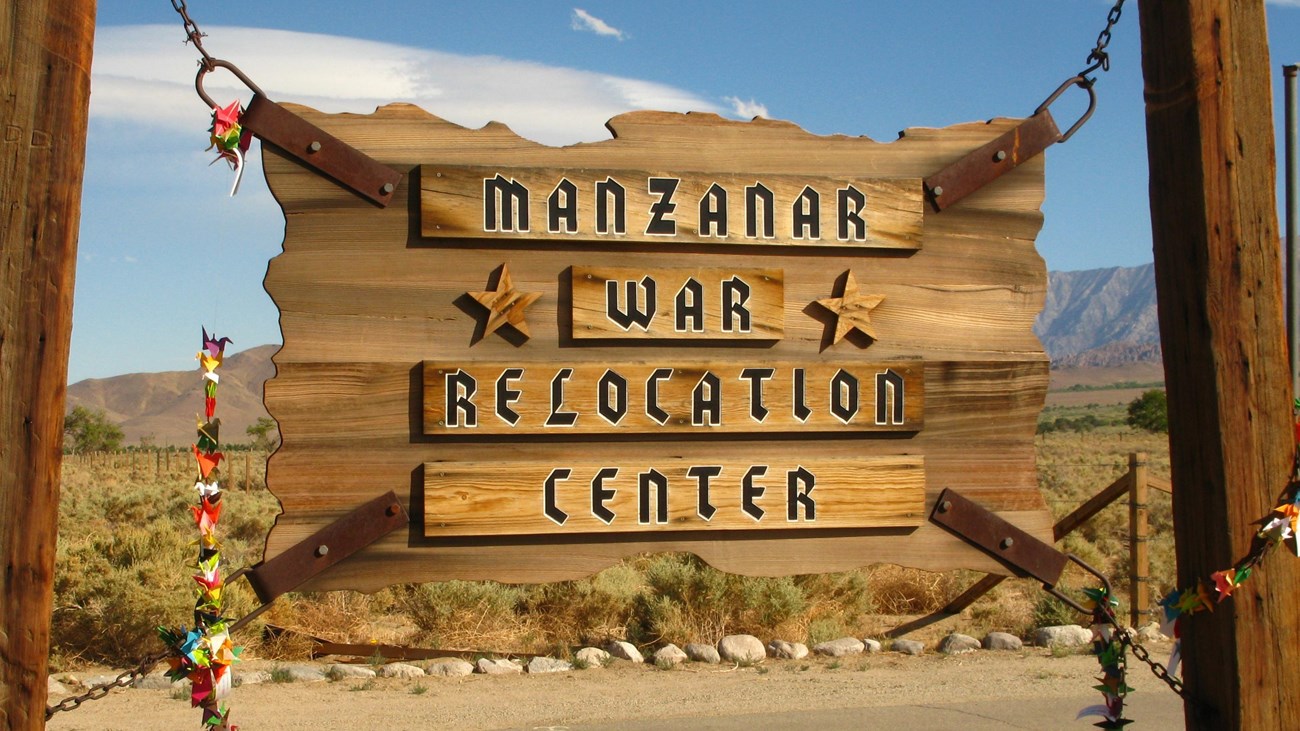|
Learn more about the high price paid by some Americans on the home front. The Tule Lake Segregation Center National Historic Landmark and nearby Camp Tulelake were both used to incarcerate Japanese Americans forcibly removed from the west coast of the United States. The historic sites encompass the segregation center's stockade, the War Relocation Authority Motor Pool, the Post Engineer's Yard and Motor Pool, a small part of the Military Police Compound, several historic structures used to imprison Japanese Americans and to detain German and Italian prisoners of war at Camp Tulelake, and the sprawling landscape that forms the historic setting. 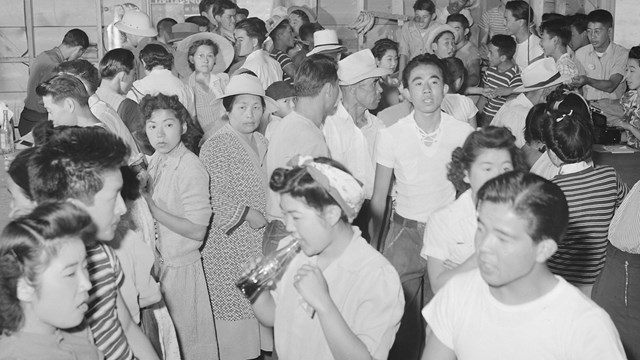
People
Important people in the history of the Tule Lake Segregation Center 
Stories
Stories from Tule Lake 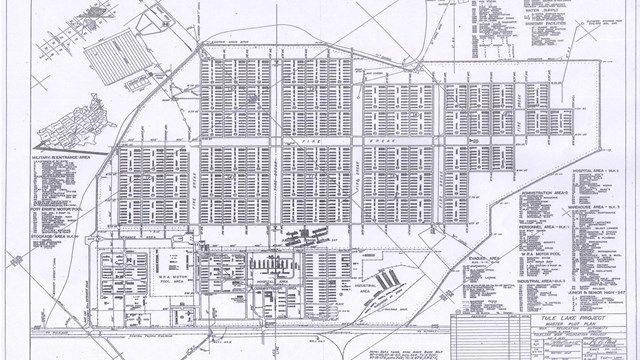
Places
Learn about the important places of this historic site 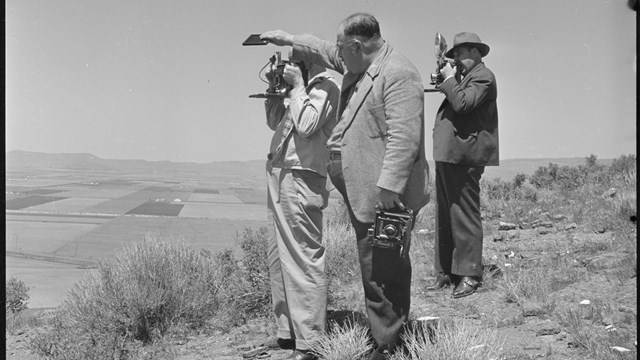
Photos & Multimedia
Watch videos about Tule Lake and browse the park's photo collection. 
Collections
Browse historic publications and other collections 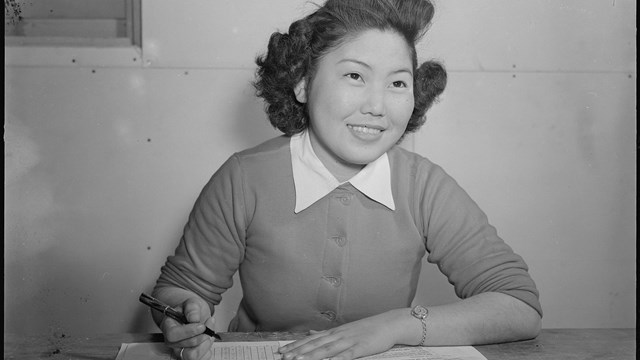
In Their Own Words
Visit the Densho Digital Repository to hear the story of the Japanese American incarceration experience from those who lived it. 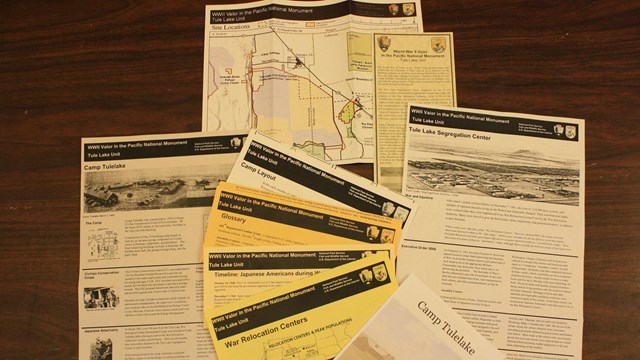
Publications
Learn more about Tule Lake National Monument and WWII by looking through our publications Timeline: Japanese Americans during World War IIOctober 14, 1940: The U.S. Nationality Act of 1940 requires that resident aliens register annually at post offices and keep the government apprised of any address changes. 91,858 Japanese aliens registered. December 7, 1941: Japan attacks the U.S. naval base at Pearl Harbor, Hawaii. President Franklin D. Roosevelt signs Presidential Proclamation No. 2525, declaring “all natives, citizens or subjects of the Empire of Japan” living in the U.S. and not naturalized to be “liable to be apprehended, restrained, secured, and removed as alien enemies.” December 8, 1941: The United States declares war on Japan. December 11, 1941: The Western Defense Command is established and Lt. General John L. DeWitt is named commander. The West Coast of the U.S. is declared a “theater of war December 29, 1941: All enemy aliens in California, Oregon, Washington, Montana, Idaho, Utah, and Nevada are ordered to surrender all contraband, including short-wave radios, cameras, binoculars, and weapons. January 5, 1942: All Japanese American selective service registrants are reclassified as IV-C, “enemy aliens.” January 29, 1942: Attorney General Francis Biddle issues orders to establish “prohibited zones” from which “enemy aliens” are excluded. German, Italian, and Japanese aliens are removed from these areas. February 4, 1942: The U.S. Army designates “restricted areas” in which enemy aliens must observe curfew and are limited in their travel. German, Italian, and Japanese aliens may not travel more than five miles from their homes in these areas. February 19, 1942: President Franklin D. Roosevelt signs Executive Order 9066 empowering the U.S. Army to designate areas from which “...any or all persons may be excluded...” February 26, 1942: A naval order requires all people of Japanese ancestry on Terminal Island, California to evacuate their homes and businesses in forty-eight hours. March 2, 1942: General DeWitt issues Public Proclamation No. 1 designating military areas in Washington, Oregon, California, and Arizona. The proclamation also states that certain persons or classes of persons might be excluded from these areas. March 11, 1942: The Wartime Civil Control Administration (WCCA) is established for “the execution of duties and responsibilities imposed upon the Commanding General, Western Defense Command,” including the exclusion of civilians from the West Coast. March 18, 1942: Executive Order 9102 establishes the War Relocation Authority (WRA). March 21, 1942: Public Law 503 is signed into law, providing penalties for persons who violate exclusion orders. March 23, 1942: The first Civilian Exclusion Order is issued by General DeWitt. It requires that all persons of Japanese ancestry “evacuate” Bainbridge Island, Washington before March 30, 1942. March 24, 1942: Public Proclamation No. 3 extends travel restrictions, curfew, and contraband regulations to Japanese Americans. March 28, 1942: Minoru Yasui presents himself for arrest at a Portland, Oregon police station to test the curfew laws. May 13, 1942: The WRA and WCCA agree to permit recruitment of seasonal farm workers at assembly and war relocation centers. By May 20, the first internees leave for sugar beet fields in Oregon. June 10, 1942: The 100th Battalion, an all-Nisei infantry battalion, is activated in Hawaii. June 12, 1942: Action is filed against Fred Korematsu in the U.S. District Court for northern California. Korematsu is charged with violating Exclusion Order No. 34. July 13, 1942: A Writ of Habeas Corpus is filed in the name of Mitsuye Endo. July 20, 1942: The WRA adopts the first policy permitting indefinite leave from war relocation centers. July 27, 1942: Toshiro Kobata and Hirota Isomura are killed by guards at Lordsburg Internment Camp in New Mexico. It is initially alleged that the men were trying to escape, but later reports suggest that the men had been too ill to walk from the train station to the camp gate. August 7, 1942: General DeWitt announces that the “evacuation” of all persons of Japanese ancestry from the West Coast is complete. October 20, 1942: The Trial of Gordon Hirabayashi begins in Seattle. Hirabayashi is charged with violating exclusion orders and curfew. December 6, 1942: Military police open fire on a group of internees protesting the arrest of another internee at Manzanar War Relocation Center. Eleven men are shot. Two, James Ito and Jim Kanegawa, die of their wounds. January 28, 1943: The U.S. Army restores the right of Japanese Americans to volunteer for military service. January 29, 1943: The War Department announces the registration program. The WRA begins administering a loyalty questionnaire to all internees over 17 years of age on February 3rd. February 1, 1943: The 442nd Regimental Combat Team is activated by the U.S. Army. The unit is made up of the 100th Battalion from Hawaii and Japanese American volunteers from the mainland. April 11, 1943: James Hatsuki Wakasa, 63, is killed by a military policeman at Topaz War Relocation Center while allegedly trying to escape through a fence. It is later determined that Wakasa had been inside the fence when shot. April 27, 1943: The War Relocation Authority Isolation center is moved from Moab, Utah to Leupp, Arizona. June 21, 1943: The Supreme Court rules on Hirabayashi and Yasui cases, upholding the constitutionality of the curfew. July 15, 1943: The WRA announces segregation. Any person who has “indicated that their loyalties lie with Japan during the present hostilities or that their loyalties do not lie with the United States” will be segregated. This includes anyone who refused to answer or answered no on the loyalty questionnaire. July 31, 1943: Tule Lake War Relocation Center is designated a segregation center for “disloyal” internees. October 15, 1943: A truck transporting internees from agricultural fields at Tule Lake Segregation Center overturns, killing one internee. The WRA is blamed for the accident since the driver was underage. Ten days later the agricultural workers go on strike. November 1, 1943: The U.S. Army assumes control of Tule Lake and internees hold mass demonstrations. January 20, 1944: Selective Service induction of Japanese Americans resumes. June 12, 1944: Mass trial held for 63 defendants from Heart Mountain charged with violation of the Selective Service Act at the Federal District Court in Cheyenne, Wyoming. All are sentenced to three years in a federal penitentiary on June 18th. June 30, 1944: Jerome War Relocation Center in Arkansas is the first of the ten centers to close. Jerome’s 5,000 remaining internees are transferred to other centers. July 1, 1944: President Roosevelt signs Public Law 405, allowing U.S. citizens to renounce their citizenship in time of war. December 17, 1944: Public Proclamation No. 21 is issued by the Western Defense Command. The proclamation lifts the West Coast exclusion orders and restores the right of Japanese Americans to return to their former communities. The proclamation is effective January 2, 1945. December 18, 1944: The Supreme Court hands down its decision on the Korematsu and Endo cases. The decision in the Korematsu case upholds the constitutionality of the exclusion orders. But the decision in the Endo case finds that the government cannot detain “concededly loyal” persons against their will. August 1, 1945: Administrative Notice No. 289, concerning the scheduled relocation of all remaining internees, is issued. August 6, 1945: The world’s first atomic bomb is dropped on the city of Hiroshima, Japan. More than 80,000 die. Three days later, the second atomic bomb is dropped on Nagasaki. August 14, 1945: Emperor Hirohito announces Japan’s surrender. The surrender is signed on September 2 aboard the battleship Missouri in Tokyo Bay. September 4, 1945: The Western Defense Command revokes all restrictions against Japanese Americans. March 20, 1946: Tule Lake Segregation Center closes. All ten war relocation centers are now closed. June 30, 1946: The War Relocation Authority is officially disbanded. July 15, 1946: The 100th Battalion/ 442nd Regimental Combat Team is honored with the Presidential Unit Citation, presented by President Harry S. Truman. Learn more about the Japanese American incarceration experience from these organizations: |
Last updated: June 22, 2023

